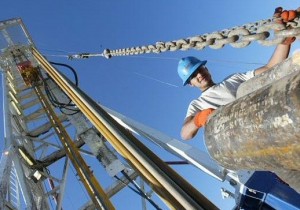US EPA Study on Hydraulic Fracturing: Opportunities to Comment
EPA continues to collect comments on hydraulic fracturing. Comment period ends September 28, 2010
PennState Cooperative Extension
 Over the past few years, the use of hydraulic fracturing for gas extraction has increased and has expanded over a wider diversity of geographic regions and geologic formations: It is projected that shale gas will comprise over 20% of the total U.S. gas supply by 2020. Because of the expansion of its use and increasing concerns, EPA announced in March 2010 that it will study the potential adverse impact that hydraulic fracturing may have on drinking water. EPA is examining the entire HF process—from obtaining the water necessary for fracturing fluids to operations to disposal of wastes—to assess the potential impacts on water resources.
Over the past few years, the use of hydraulic fracturing for gas extraction has increased and has expanded over a wider diversity of geographic regions and geologic formations: It is projected that shale gas will comprise over 20% of the total U.S. gas supply by 2020. Because of the expansion of its use and increasing concerns, EPA announced in March 2010 that it will study the potential adverse impact that hydraulic fracturing may have on drinking water. EPA is examining the entire HF process—from obtaining the water necessary for fracturing fluids to operations to disposal of wastes—to assess the potential impacts on water resources.
EPA has sought advice regarding the potential scope of the study plan from EPA’s Science Advisory Board (SAB) Environmental Engineering Committee, an independent, external federal advisory committee. The SAB’s input will help ensure that a sound scientific approach is used to develop the study plan.
Over the summer, EPA conducted a number of public meetings to receive broad, balanced input on the study plan from stakeholders across the country in key regions affected by hydraulic fracturing. Meetings were held July—September 2010 in Binghamton, New York; Canonsburg, Pennsylvania; Fort Worth, Texas; and Denver, Colorado. The goal of the meetings was to obtain input to help evaluate potential risks associated with hydraulic fracturing in an effort to protect America’s communities and resources.
You can still provide comments until Tuesday, September 28, 2010, by utilizing one of the following methods:
- By mail to: Jill Dean, 1200 Pennsylvania Avenue, N.W., Mailcode 4606M, Washington, DC 20460.
- By e-mail to: hydraulic.fracturing@epa.gov. Write “Hydraulic Fracturing Study—Comments” in the subject line of the message.
Public concerns have focused recently on the impacts of the hydraulic fracturing process used during natural gas production from shale and coalbed methane formations.
Potential risks to surface and underground sources of drinking water might occur at various points in the hydraulic fracturing process. The likelihood of those risks causing drinking water contamination will be evaluated during the EPA hydraulic fracturing study. Contaminants of concern to drinking water include fracturing fluid chemicals and degradation products and naturally occurring materials in the geologic formation (e.g., metals, radionuclides) that are mobilized and brought to the surface during the hydraulic fracturing process.
EPA has information on the hydraulic fracturing study, public meetings, presentations used during the meetings, and webinars on the EPA web site at: http://epa.gov/safewater/uic/wells_hydrofrac.html
Submitted by Joann Kowalski, Penn State Extension Educator, Susquehanna County
